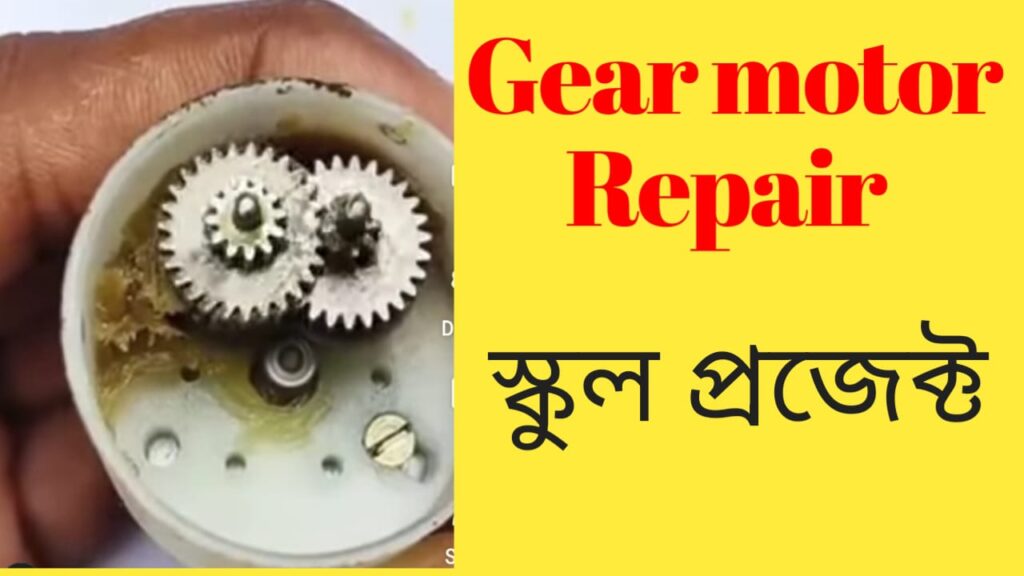Gear motors play a crucial role in various industries, ensuring the smooth operation of machinery. However, like any mechanical component, they may encounter issues over time. In this guide, we’ll explore the art of easy gear motor repair, empowering you to troubleshoot and fix common problems without the need for professional assistance.
I. Introduction
Gear motors are the unsung heroes behind the movement of machinery. Whether in industrial settings or everyday appliances, these devices consist of intricate components working in harmony. Understanding how to repair them can save both time and money, making it a valuable skill for any DIY enthusiast or maintenance professional.

II. Understanding Gear Motors
A. Components of Gear Motors
- Gears: The heart of the gear motor, responsible for transmitting power.
- Motor: The power source driving the gears into motion.
B. Common Issues in Gear Motors
Identifying common problems is the first step in effective repair. Issues may range from gear misalignment to motor malfunctions, affecting overall performance.
III. Tools Needed for Repair
A. Basic Toolkit
A well-equipped toolbox is the key to successful gear motor repair. Essential items include screwdrivers, pliers, and wrenches.
B. Specialized Tools for Gear Motors
For more complex repairs, investing in specialized tools such as gear pullers and alignment tools ensures precision.
IV. Step-by-Step Gear Motor Repair Guide
A. Assessing the Problem
Begin by identifying the symptoms and assessing the extent of the issue. Is it a gear misalignment, motor failure, or a combination of factors?
B. Disassembly
Carefully disassemble the gear motor, keeping track of each component’s placement.
C. Cleaning Components
Remove debris and old lubricants, ensuring a clean slate for inspection and repair.
D. Replacing Damaged Parts
Replace worn-out gears or malfunctioning motor components with high-quality replacements.
E. Lubrication
Proper lubrication is essential for smooth gear operation. Choose the right lubricant based on the gear motor specifications.
F. Reassembly
Carefully reassemble the gear motor, paying attention to the correct positioning of each part.
G. Testing
Conduct a thorough test to ensure the successful repair of the gear motor. Check for smooth operation and address any lingering issues.
V. Tips for Preventive Maintenance
A. Regular Inspections
Routine checks can identify potential problems before they escalate, extending the lifespan of the gear motor.
B. Lubrication Schedule
Follow a regular lubrication schedule to prevent friction-related issues and ensure optimal performance.
C. Temperature and Environment Considerations
Consider the operating environment and adjust maintenance practices accordingly, especially in extreme temperatures or harsh conditions.
VI. Troubleshooting Common Gear Motor Issues
A. Overheating
Address overheating issues by checking for adequate ventilation and proper lubrication.
B. Noisy Operation
Unusual noises may indicate misaligned gears or worn-out components. Investigate and replace as needed.
C. Gear Misalignment
Misaligned gears can lead to performance issues. Use alignment tools to correct any deviations.
VII. Benefits of DIY Gear Motor Repair
A. Cost-Effectiveness
DIY repair can significantly reduce maintenance costs compared to hiring professionals.
B. Skill Development
Learning to repair gear motors enhances your mechanical skills, opening new opportunities for tackling diverse projects.
C. Quick Turnaround
Fixing gear motors in-house ensures a faster turnaround, minimizing downtime in industrial settings.
VIII. When to Seek Professional Help
A. Complex Issues
If the problem exceeds your expertise, don’t hesitate to seek professional assistance to avoid further damage.
B. Lack of Expertise
When dealing with advanced gear motor issues, lack of expertise may lead to ineffective repairs. Professional help ensures a reliable solution.
IX. Case Study: Successful Gear Motor Repair
A. Real-Life Example
Explore a real-life scenario where a DIY enthusiast successfully repaired a malfunctioning gear motor, highlighting key strategies and lessons learned.
B. Lessons Learned
Extract valuable lessons from the case study, offering insights into common challenges and effective repair approaches.
X. Q&A Section
A. Can Anyone Repair a Gear Motor?
Absolutely! With the right knowledge and tools, anyone can tackle gear motor repair.
B. How Often Should Gear Motors Be Inspected?
Regular inspections every three to six months are advisable for preventive maintenance.
C. Are There Any Safety Considerations?
Always prioritize safety by disconnecting power sources before starting any repair work.
D. Can Using the Wrong Lubricant Cause Damage?
Yes, using the wrong lubricant can lead to increased friction, overheating, and premature wear.
E. What Are the Signs of a Failing Gear Motor?
Unusual noises, overheating, and decreased performance are common signs of a failing gear motor.
XI. Conclusion
In conclusion, mastering the art of easy gear motor repair offers numerous advantages, from cost savings to skill development. By following this comprehensive guide, you’ll be well-equipped to troubleshoot and fix common issues, ensuring the longevity and efficiency of your gear motors.
- How To Make DIY Mini bus Project From Cardboard at home. - May 8, 2024
- How To Make Humidifier Spray Module / Mist Maker Project . - April 27, 2024
- How To Make a New Model Subwoofer Box Project by Cardboard - April 15, 2024
